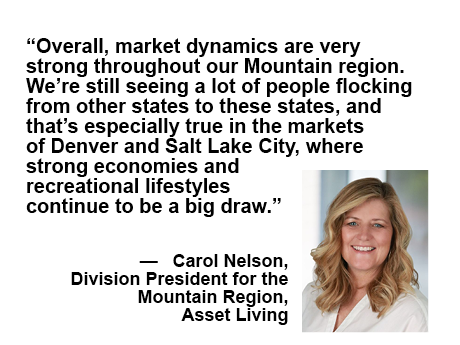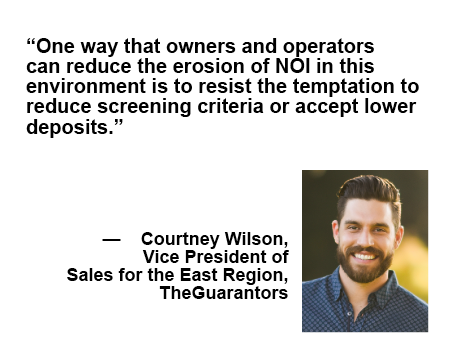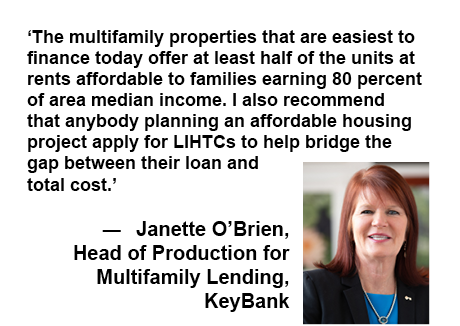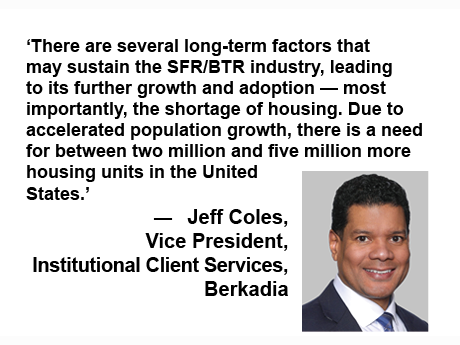Population growth in the Mountain states over the last several years has fueled historic apartment construction across Colorado and Utah. The activity has created some supply overhang in the Denver and Salt Lake City markets in particular, but continuing in-migration, housing shortages and the high cost of home ownership could sustain their resiliency, say two of Asset Living’s newest executives in the region. Based in Houston, Asset Living manages assets valued at $55 billion nationwide, including more than 1,750 apartment properties in addition to student, affordable and single-family build-to-rent housing. …
Industry Content
Multifamily Market Challenges: Strategies for Operators to Preserve NOI Amidst Rising Costs, Supply Pressures
Multifamily operators face a number of challenging factors in today’s market. The spike in the cost of debt along with higher expenses across the board — from property insurance and taxes to construction and labor — as well as adverse effects left over from eviction moratoriums are eating away at net operating income (NOI) across the country. During the third quarter of 2023, multifamily expenses grew 7.2 percent, more than double the rate of inflation, according to Freddie Mac’s 2024 multifamily forecast. Additionally, rent control efforts in some jurisdictions are …
Heightened Demand for Affordable Rental Housing Sets Tone for 2024 Investment Opportunities
Multifamily & Affordable Housing Business sat down with Marge Novak, senior vice president and head of Capital Markets at Berkadia, for a question-and-answer discussion about the current state of the affordable housing market and the challenges likely to influence 2024. Multifamily & Affordable Housing Business: How is the affordable housing market faring in the current economic conditions? Novak: With increased inflation and interest rates, home prices hit all-time highs, making them less affordable than at the height of the 2006 housing bubble. While buyers waited for prices to fall, sellers …
Asset Living Emphasizes Occupancy, Efficiency as Market Conditions Soften
Sensing a shift in the wind, multifamily property manager Asset Living is preparing for a bumpier leasing environment amid rising supply, slowing rent growth and overall economic uncertainty. While an adjustment, it shouldn’t come as a complete shock, says Robert Hicks, an Asset Living division president in charge of the conventional multifamily business in the western United States. Over the past handful of years, the sector has enjoyed some of the highest occupancies he has seen in his 25-year career in the industry, he points out. At the same time, …
Tech-Driven Renters Insurance Model Ramps Up Efficiency, Reduces Risk
The failure of residents to meet coverage requirements or letting policies lapse can cost owners and operators significantly, according to TheGuarantors, a fintech company serving the multifamily industry. For some operators, this can mean up to hundreds of thousands of dollars in liability costs. It can be months before operators become aware that residents have changed or canceled their policy. Property technology (proptech) innovations have helped digitize every facet of the leasing, management, maintenance, rent collection and revenue management processes. However, most proptech improvements have traditionally been renter focused, rather …
Fine-Tune Borrowing Strategies to Activate Multifamily Projects
Multifamily developers and owners seeking debt financing face a gauntlet of headwinds, but deal flows confirm that good deals are still landing loans. That’s according to Janette O’Brien, head of production for multifamily lending at KeyBank. As one of the nation’s largest bank-based financial services companies, KeyBank has a full pipeline of multifamily loans in process. That puts O’Brien’s finger on the pulse of what differentiates viable deals in today’s volatile market. Multifamily & Affordable Housing Business asked O’Brien about current borrower challenges, as well as the strategies that are helping some …
Single-Family Rental, Build-to-Rent Sector Increases Supply Volume, Attracts Institutional Capital
By Jeff Coles, Berkadia Over the last 15 years, even during the Great Recession, single-family rentals continued to deliver excellent returns through appreciation and rental income. As demand for the sector has increased significantly, driven by changing migration patterns, many investors are shifting their investment strategies to include single-family rental/build-to-rent homes (SFR/BTR), also referred to as built for rent (BFR) houses. Development and Interest in SFR/BTR Despite recessionary rumors, development is continuing, often undertaken by some of the leading developers in the for-sale single-family market. Also, institutional investors have shown …







